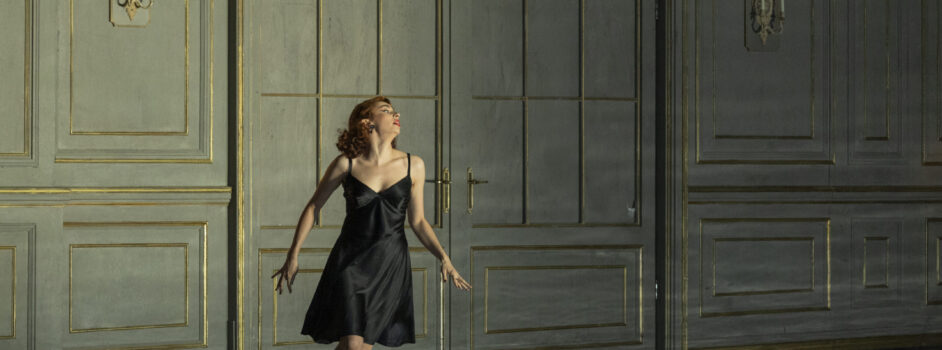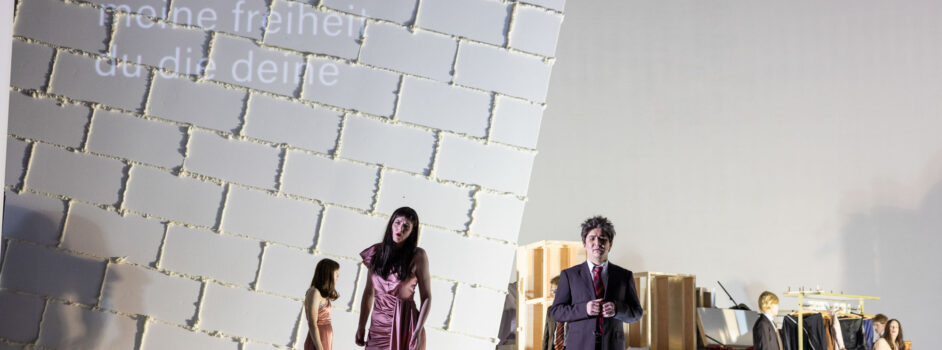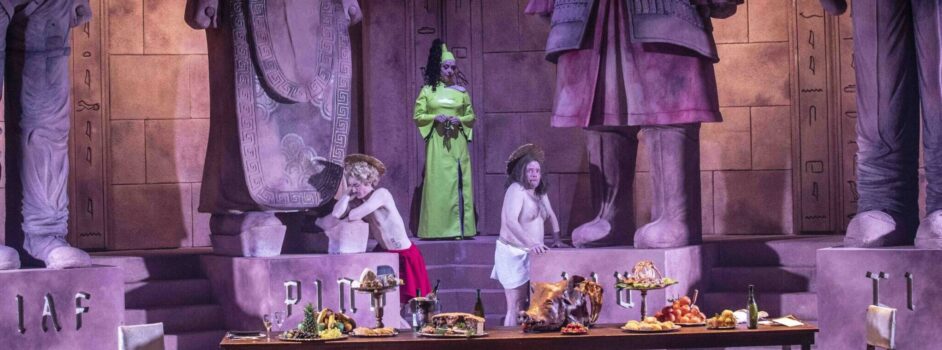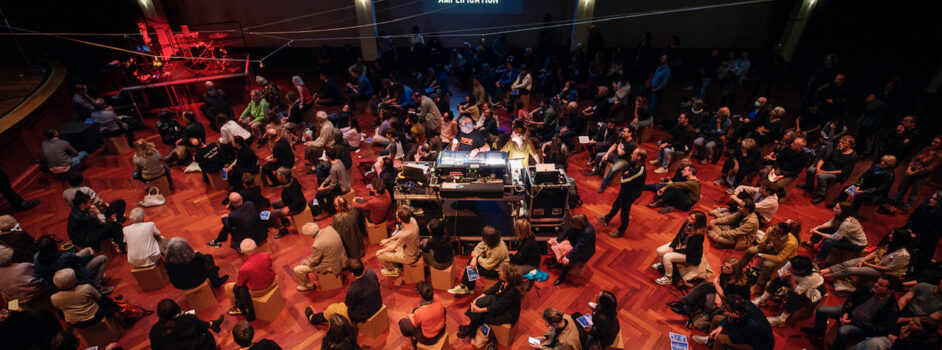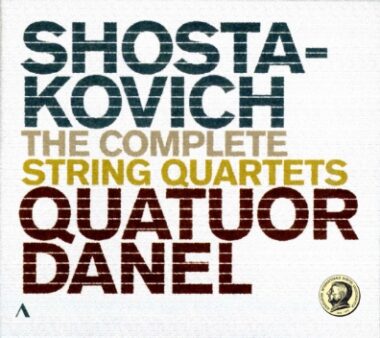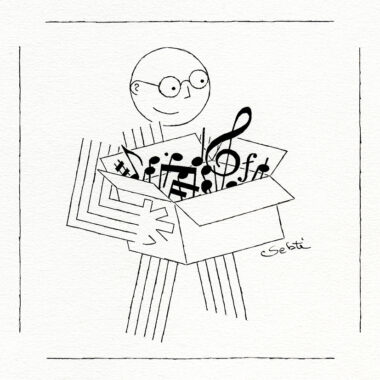Plus de détails
Helsinki, House of Nobility16.VI-2014. Heitor Villa-Lobos (1887-1959): Bachianas Brasilieras No. 1 (movements I and II). Aija Puurtinen (b. 1959): Beaivi Ahcazan, Noaiddi. Heitor Villa-Lobos: Bachianas Brasilieras No. 5. Richard Wagner (1813-1883): Siegfried Idyll. Piia Komsi, soprano. Beata Antikainen, Markus Hallikainen, Jaani Helander, Lauri Kankkunen, Klaus Mäkelä, Lauri Rantamoijanen, Jonathan Roozeman, Senja Rummukainen, cellos. Kamarikesä Ensemble. Dalia Stasevska, conductor.
18.VI-2014. Helsinki, House of Nobility. Sofia Gubaidulina (b. 1931): In Croce. Benjamin Britten (1913-1976): String Quartet No. 2, op. 36. Olivier Messiaen (1908-1992): Quatour pour la fin du temps. Klaus Mäkelä, cello, Janne Valkeajoki, bayan,
BOREA String Quartet: Kasmir Uusitupa and Tami Pohjola, violins, Riina Piirilä, viola, Senja Rummukainen, cello. Sini Simonen, violin, Veera Myllyniemi, clarinet, Lauri Kankkunen, cello, Roope Gröndahl, piano.
Now in its tenth year, the Kamarikesä Festival (Helsinki Chamber Summer) was founded to serve as a platform for young and talented Finnish musicians to showcase their artistry in a formal concert setting.
The first half of the opening program was focused on the cello, featuring the finalists from Finland’s national cello competition. Two well-known works for cello ensemble from Villa-Lobos, as well as a more recent work from the Finnish composer Aija Puurtinen, were performed.
Scored for various ensembles (ranging from a duet to full orchestra), Villa-Lobos’ Bachianas Brasilieras series displays the composer’s penchant for popular Brazilian music while acting as an homage of sorts to Bach. The first and fifth of this series are scored for an ensemble of eight cellos, with the fifth featuring a soprano soloist as well. The first movement of the Bachianas Brasilieras No. 1 is characterized by memorable melodic material supported by vigorous rhythms and busy contrapuntal writing, while the second movement features a beautiful, soulful melancholy. The fifth Bachianas opens with a broad melody for the soprano accompanied by solo cello. This is followed by an impassioned central section. The second and final movement is a light-footed dance, featuring rapid-fire passages for the soprano.
Aija Puurtinen’s two-movement Beaivi Ahcazan, Noaiddi was performed between the two Villa-Lobos works. Scored for cello quartet and soprano, the first movement Beaivi Ahcazan (Sun, my Father) was effectively written for this ensemble, featuring rich lower-register harmonies and clear pizzicato passages. The second movement, Noaiddi (Witch), was almost reminiscent of an Apocalyptica arrangement, with imposing and mechanical power chords. The hysterical cackling which concluded the movement was further evidence that soprano Piia Komsi is a true force of nature.
One of the greatest challenges for an orchestral string section is achieving a seamless sense of unity in sound. This includes not only ensemble but also balance, intonation, articulation, vibrato, and even breathing. While the young cellists featured in this program are extremely gifted, some of the difficulties in ensemble playing were apparent in the first Bachianas Brasilieras. Melodic lines were occasionally obscured by the vigorous contrapuntal passages, and intonation and ensemble between individual players was sometimes shaky.
However, despite these reservations it is important to emphasize that these performances were immensely enjoyable largely due to the sheer joy and energy that these young musicians brought onto stage.
The second half of this program featured Wagner’s Siegfried Idyll, in a warm but probing interpretation led by Dalia Stasevska.
The final program of this series offered a varied menu of 20th-century works. Scored for cello and bayan, Gubaidulina’s In Croce opens with a held cluster in the bayan, spiced with flickering A major arpeggios. The cellist enters, obsessively filling the space within a half step. The music feels largely improvisatory until the impassioned central climax, from which the music gradually unwinds, until the opening arpeggios are heard in the cello.
Gubaidulina’s score provided ample opportunity to showcase cellist Klaus Mäkelä’s formidable talents: the controlled swells of the opening, the clearly defined rapid pizzicato passages, and the sustained intensity during the broad ascending lines. Janne Valkeajoki’s confident bayan playing provided a colorful foil to the cello.
Britten’s String Quartet No. 2 is probably not the first choice of repertoire for a young string quartet wishing to showcase their talent. In addition to the technical challenges that must be overcome, the players must also provide a clear musical and emotional argument to this somewhat ambiguous and elusive work.
Improvisatory and wandering lines over a held tenth open the work, creating a sense of reverie. Jagged and angular writing soon takes over, as the music becomes increasingly animated. The second movement is a fleet, shadowy dance, accompanied by rapid arpeggios. The lengthy final movement takes the form of a chaconne. Despite Britten’s seemingly endless well of variations, this movement at times seemed unnecessarily protracted. At the work’s conclusion, the chaconne theme returns, repeated interrupted by assertive and slashing C major chords. The effect is surprisingly grinding and seems to invalidate any sense of victory or resolution.
The BOREA Quartet handled Britten’s often treacherous writing with impressive ease: the soft unison passages, the angular arpeggios, and the virtuosic solo cadenzas. Furthermore, they were able to providing a clear sense of direction in the meandering and austere final movement.
Although Messiaen’s Quatour pour la fin du temps is firmly established in the 20th-century chamber music repertoire, only the most committed of interpreters can produce a successful performance. This evening’s performers established the requisite sense of timelessness and space, while allowing the music to patiently breath and evolve.
Technical proficiency can be developed in a musician at a very young age, but musical maturity often comes much later. Perhaps the most satisfying aspect of this concert was the fact that these young artists chose not to perform shallow technical showpieces but rather a challenging set of works whose messages can elude even the most experienced of musicians. These performances transcended the many technical challenges and revealed the core essences of these works. Bravo.
Plus de détails
Helsinki, House of Nobility16.VI-2014. Heitor Villa-Lobos (1887-1959): Bachianas Brasilieras No. 1 (movements I and II). Aija Puurtinen (b. 1959): Beaivi Ahcazan, Noaiddi. Heitor Villa-Lobos: Bachianas Brasilieras No. 5. Richard Wagner (1813-1883): Siegfried Idyll. Piia Komsi, soprano. Beata Antikainen, Markus Hallikainen, Jaani Helander, Lauri Kankkunen, Klaus Mäkelä, Lauri Rantamoijanen, Jonathan Roozeman, Senja Rummukainen, cellos. Kamarikesä Ensemble. Dalia Stasevska, conductor.
18.VI-2014. Helsinki, House of Nobility. Sofia Gubaidulina (b. 1931): In Croce. Benjamin Britten (1913-1976): String Quartet No. 2, op. 36. Olivier Messiaen (1908-1992): Quatour pour la fin du temps. Klaus Mäkelä, cello, Janne Valkeajoki, bayan,
BOREA String Quartet: Kasmir Uusitupa and Tami Pohjola, violins, Riina Piirilä, viola, Senja Rummukainen, cello. Sini Simonen, violin, Veera Myllyniemi, clarinet, Lauri Kankkunen, cello, Roope Gröndahl, piano.

